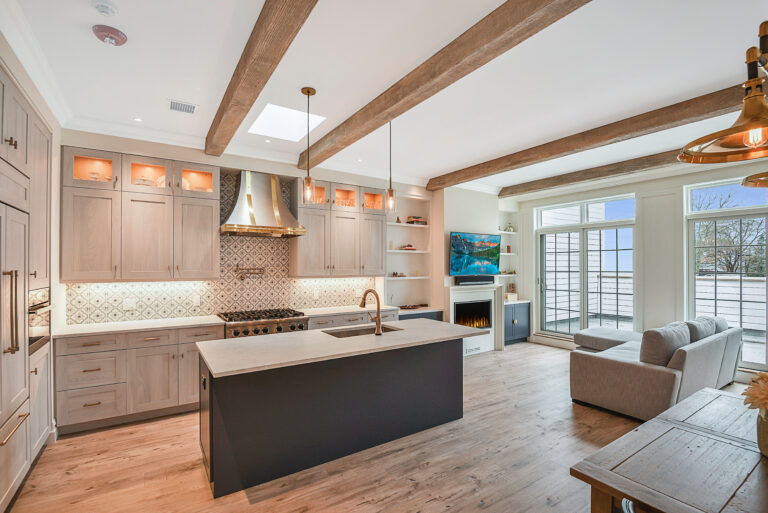A Comprehensive Guide to Converting Your Attic into a Livable Space
Your attic holds untapped potential, waiting to be transformed into a functional and inviting living area. Whether you’re looking to create a cozy bedroom, a home office, or a playroom, converting your attic can provide valuable extra square footage without the need for costly additions. In this blog post, we’ll provide a detailed breakdown of the process to renovate your attic, covering everything from obtaining building permits to architectural considerations, with real-world examples and scenarios.
Step 1: Obtain Building Permits
Before embarking on any renovation project, it’s essential to obtain the necessary building permits to ensure compliance with local building codes and regulations. Research the permit requirements specific to your area, which may include zoning restrictions, structural requirements, and safety standards. Depending on the scope of your attic conversion, you may need permits for electrical work, plumbing installation, and structural modifications. Failure to obtain permits can result in costly fines and delays, so it’s crucial to start this process early.
Example: In City X, homeowners are required to obtain a building permit for any attic conversion project that involves structural alterations or changes to the occupancy of the space. The permit application process includes submitting detailed architectural plans, engineering calculations, and a description of the proposed work. Once approved, inspections may be required at various stages of the renovation to ensure compliance with building codes.
Step 2: Assess Structural Considerations
Before commencing renovation work, assess the structural integrity of your attic to determine if any modifications are needed to support the new living space. Consider factors such as ceiling height, roof pitch, load-bearing walls, and access points. Consult with a structural engineer or architect to evaluate the feasibility of your design and identify any necessary reinforcements or modifications.
Example: Homeowner A plans to convert their attic into a bedroom but discovers that the existing ceiling height is too low to meet building code requirements. To address this issue, they consult with a structural engineer who recommends raising the roofline or installing dormers to create additional headroom. After receiving approval from the local building department, construction begins to implement the necessary structural changes.
Step 3: Plan for Plumbing, Electrical, and HVAC
If your attic conversion involves adding a bathroom, kitchenette, or laundry room, you’ll need to plan for plumbing, electrical, and HVAC (heating, ventilation, and air conditioning) systems. Determine the location of plumbing fixtures, electrical outlets, light fixtures, and HVAC vents to ensure optimal functionality and efficiency. Hire licensed professionals to handle any complex installations and ensure compliance with building codes.
Example: Homeowner B wants to convert their attic into a home office and hobby space, complete with a small kitchenette. They hire a plumber to install plumbing lines for a sink and a gas line for a compact stove. An electrician is enlisted to add additional outlets, lighting fixtures, and wiring for appliances. Finally, an HVAC contractor installs a ductless mini-split system to provide heating and cooling comfort year-round.
Step 4: Insulate and Ventilate
Proper insulation and ventilation are essential for creating a comfortable and energy-efficient living space in your attic. Install insulation in walls, floors, and ceilings to regulate temperature and reduce energy costs. Consider using spray foam insulation or rigid foam boards for maximum efficiency. Additionally, ensure adequate ventilation to prevent moisture buildup and improve indoor air quality. Install ridge vents, soffit vents, or dormer windows to promote air circulation and prevent condensation.
Example: Homeowner C opts for spray foam insulation to maximize energy efficiency in their attic conversion project. They install rigid foam insulation along the roofline and between rafters to create a continuous thermal barrier. To ensure proper ventilation, they add ridge vents and gable vents to allow for airflow, preventing moisture buildup and reducing the risk of mold or mildew growth.
Step 5: Design and Decorate
With the structural work and installations complete, it’s time to focus on the design and decoration of your new attic space. Choose a cohesive color scheme, flooring materials, and furnishings that reflect your personal style and enhance the functionality of the space. Maximize natural light with skylights, dormer windows, or strategically placed windows. Incorporate built-in storage solutions to maximize space efficiency and keep clutter at bay.
Example: Homeowner D transforms their attic into a serene master suite, complete with a bedroom, sitting area, and ensuite bathroom. They opt for light, neutral colors to create a bright and airy atmosphere, complemented by hardwood floors and plush area rugs. A large skylight floods the room with natural light during the day, while recessed lighting provides ambient illumination at night. Custom-built closets and under-bed storage offer ample space for clothing and personal belongings, maintaining a clean and organized environment.
Conclusion:
Converting your attic into a livable space requires careful planning, attention to detail, and the expertise of professionals. By following this comprehensive guide, you can unlock the hidden potential of your attic and create a valuable extension of your home. From obtaining building permits to addressing structural considerations and designing the perfect layout, each step is essential for a successful attic renovation project. With creativity, patience, and a bit of vision, you can transform your attic into a functional and inviting living area that enhances your home’s comfort and value for years to come.

